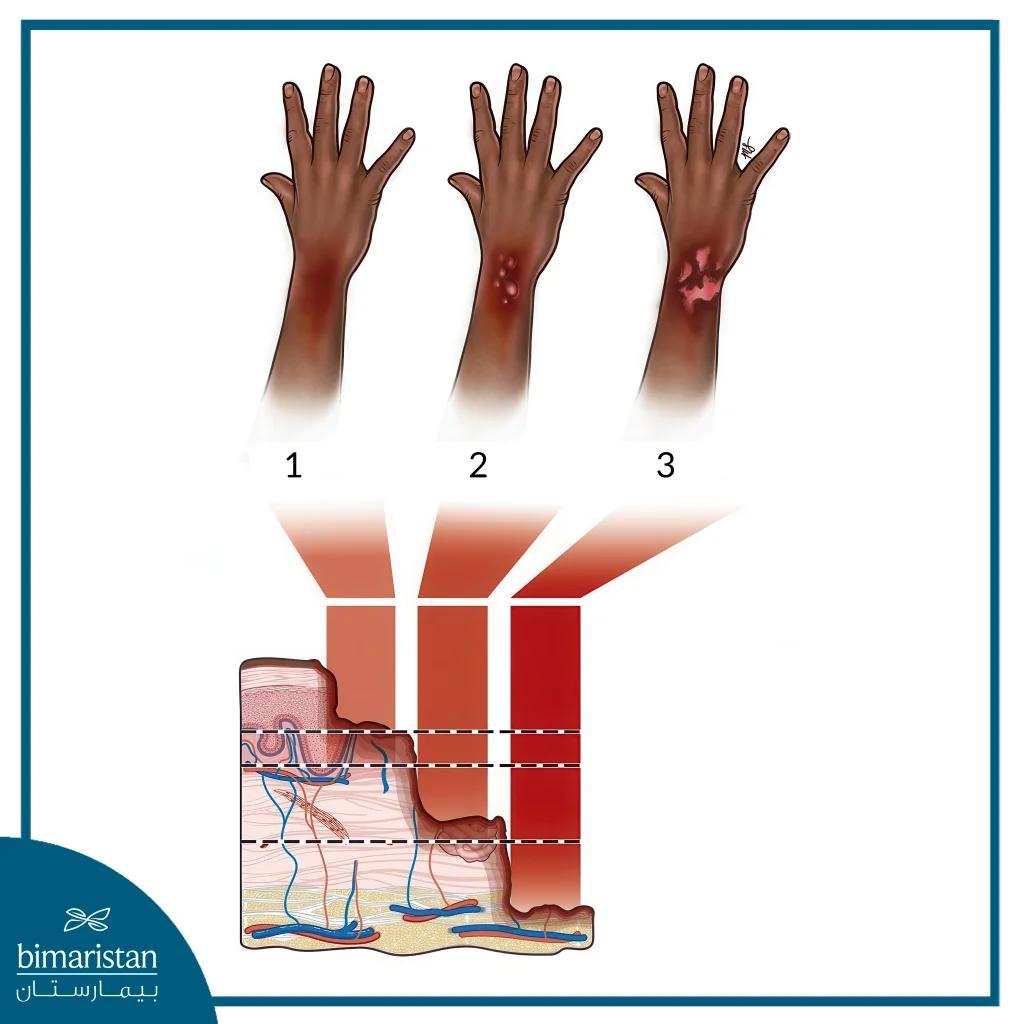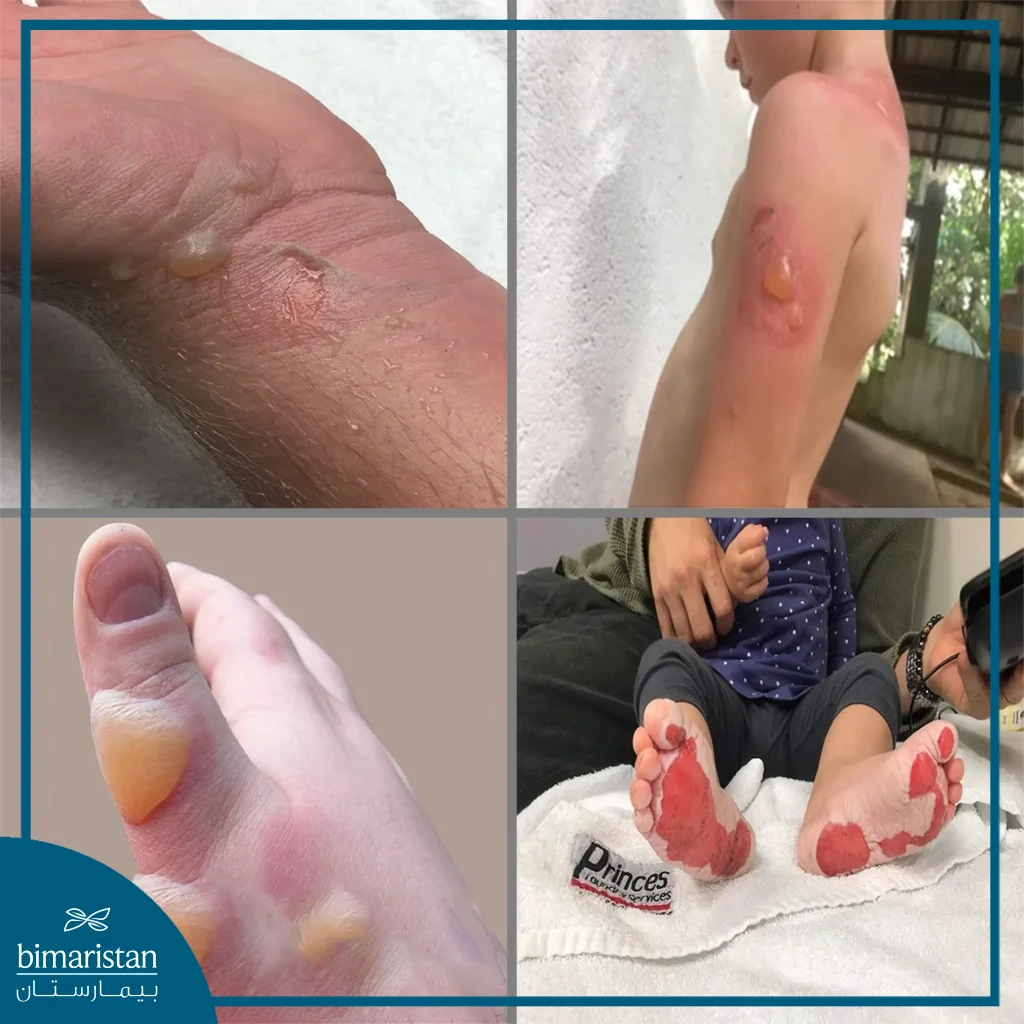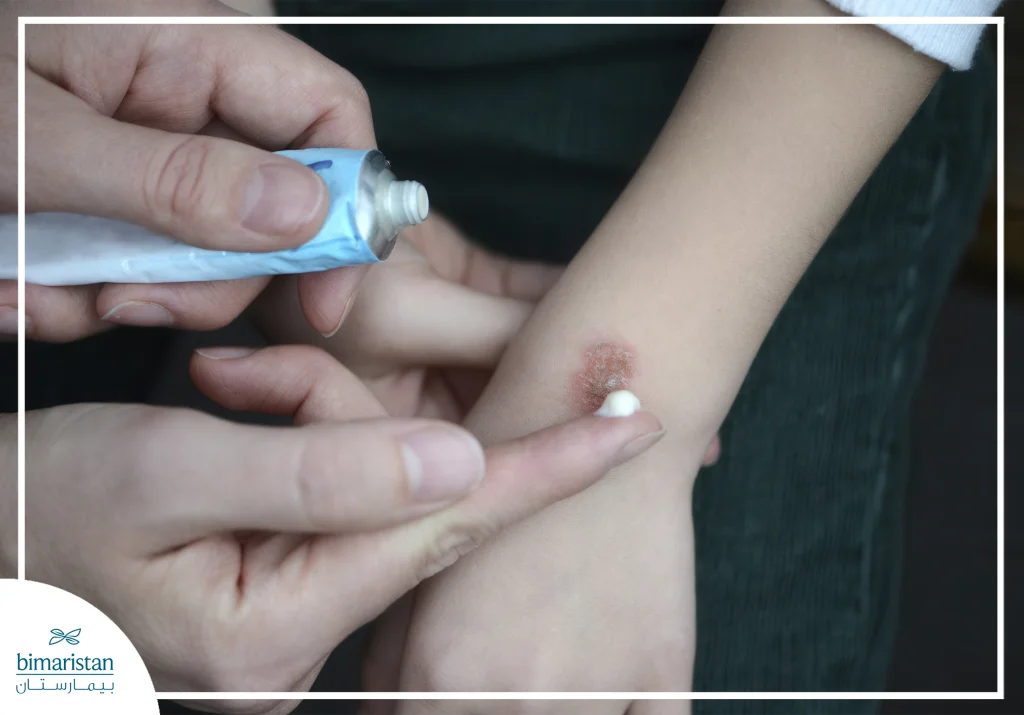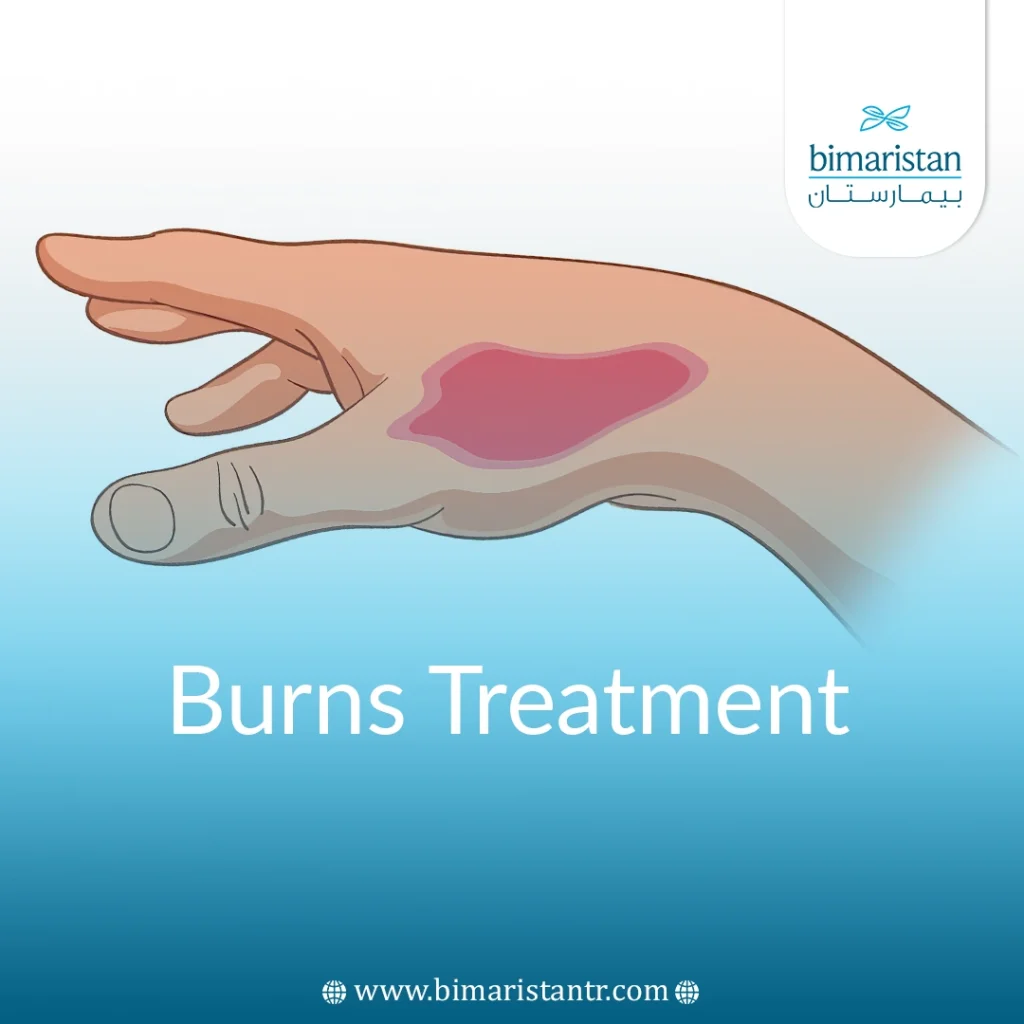Burns treatment is needed for skin injuries caused by exposure to heat, chemicals, electricity, or radiation. Burns treatment varies by severity, from mild (slight redness) to severe (complete skin damage). The severity of burns treatment depends on the depth of the injury and the area of skin affected.
While some burns can be easily treated at home, severe burns require immediate medical attention to prevent serious complications.
This guide will provide you with valuable information, including:
- Effective first aid for different types of burns.
- Signs to see a doctor.
- Ways to care for wounds and promote healing.
- Important tips to prevent burns and keep you and your family safe.
Burns treatment and degrees of burns
Burns treatment for superficial burns (or first-degree burns), second-degree burns, and third-degree burns (and fourth-degree burns in rare cases) is one of the most important topics of interest to people, given that burns treatment is essential for common everyday household skin injuries, and doctors must be familiar with the methods and techniques for burns treatment. Furthermore, burns treatment for children’s burns poses a challenge for doctors.
Burns treatment in children differs from adults, making it essential for everyone to know first aid for burns and home treatment methods, from applying cold water to using ointments like Mebo. Is it safe to apply cooling substances like olive oil, egg whites, toothpaste, or honey-based ointments, or should an ambulance be called to transfer the burn victim to a hospital burn care center?
What are the degrees of burns?
- First-degree burns: Mild (similar to sunburn). The outer layer of skin (epidermis) turns red and is often painful at the site of the burn, but they don’t usually blister.
- Second-degree burns: Affect the upper and lower layers of skin (dermis and epidermis). The patient feels more pain and redness, and blisters and blisters often form.
- Third-degree burns: A third-degree burn affects all layers of skin and the layers beneath the skin, including the fatty layer, adjacent tissues, and nerve endings. Since the nerve endings are burned, pain does not appear at the site of the burn, but rather in the areas adjacent to the burn. The skin is usually black with a black synthetic leather appearance. This burn requires intensive medical care and usually leaves permanent scarring.
Fourth-degree burns (which are rare) cause indescribable pain due to the burn reaching the tendons and muscles.
Read about: Mouth sores treatment and tips for preventing them

Read about: Your Guide to Plastic and Reconstructive Surgery in Turkey
Common causes of burns
There are countless causes of burns, and most of these causes cause minor, superficial burns.
Thermal sources are the most common causes of burns. Fire, hot liquids (boiling water), steam, and contact with hot surfaces are the most common causes worldwide.
Other less common but often more serious causes vary in severity (i.e., depth) depending on the source of the burn:
- Chemical causes: Caustics, building materials, and detergents
- Radiological causes: Laser burns (hair removal lasers) and sunlight
- Electrical burns
- Some toxins poison
People are exposed to these causes daily, and doctors must use the best treatments appropriate to the type and severity of the burn. They must also work to manage severe burns, especially chemical burns, quickly.
Burn complications
Deep third-degree burns, which affect a large portion of the patient’s skin, are severe and can be life-threatening. Even first- and second-degree burns can infect, causing skin discoloration and scarring. However, first-degree burns typically do not cause any scarring.
Possible complications of third-degree (or second-degree) burns include:
- Arrhythmia – Irregular heartbeats due to electrical burns.
- Dehydration – Risk increases if burns cover large areas.
- Severe Hypothermia – Due to extensive skin damage.
- Breathing Issues – Caused by inhaling hot air or smoke.
- Disfiguring Scars & Skin Adhesions – Affect appearance and mobility.
- Muscle Spasms & Joint Problems – If burns impact overlying skin.
- Edema – Excess fluid buildup and severe tissue swelling.
- Organ Failure & Pneumonia – Widespread inflammation can be life-threatening.
- Shock – A dangerous drop in blood pressure.
- Severe Infections & Sepsis – May require amputation or lead to fatal complications.
Immediate burns treatment is crucial to prevent these complications!
Degrees of burns with pictures

Get to know: The top causes of gum pain and swelling that you should know about.
First aid for burns and treating minor burns at home
How do I treat burns at home? If this is your question, we can tell you that treatment for minor burns (first- and second-degree burns) is simpler than treating higher-degree burns. A protocol is usually used to treat these burns, and this protocol is easy to implement. A nurse or even a caregiver can implement it. Here are some notes and steps on how to treat minor burns at home:
- First, cool the burn by placing the affected area under a stream of cool water (not freezing cold, as many people mistake) for 10 minutes. If the injury is on the face, apply a cold, wet cloth until the pain subsides. Ice can be placed on the burns inside the mouth.
- Remove rings or other tight objects from the burned area. Try to do this quickly and gently before the area swells. Blisters formed in second-degree burns should not be burst. If this occurs, an antibiotic ointment should be applied to the area to prevent infection, as blisters help protect against infection.
- After the burn has cooled, apply burn ointments such as Meboo Ointment for Burn Treatment (a study has shown the effectiveness of Meboo Cream in relieving the symptoms of burns and severe post-operative wounds, especially pain). Also, Avo Meb Ointment can be applied for burn treatment (Sine Meb Plus Ointment can be used for first-degree burns). This helps prevent dehydration and provides pain relief.
- Apply a bandage to the injured area. Ensure the bandage is clean. Wrap the bandage loosely to avoid applying pressure to the burned skin.
- If necessary (for severe pain), the patient can take an over-the-counter pain reliever, such as ibuprofen, naproxen sodium, or acetaminophen (Tylenol, among others).
- Aloe vera cream can be applied to sunburns. However, burns should not be cooled with household products, honey, eggs, or other substances.
- Avoid using cotton on burns to prevent them from sticking. Use sterile gauze instead.
Read about: Laser treatment for vitiligo in Turkey

Treatment of severe and widespread burns
The treatment of these burns is complex, and the main burns treatment is done in the hospital by specialized doctors. However, the patient’s companions can minimize complications and symptoms if they behave properly and contribute to the treatment process. We recommend the following steps:
An ambulance should be called immediately in the case of serious third-degree burns or chemical or electrical burns, even if the injury does not appear to be serious, as the internal injury is severe. The victim will suffer serious complications if the burn is not managed and treated quickly.
Make sure the patient is able to breathe, otherwise start resuscitation, and move the patient away from the scene of the accident and the cause so that you are not injured or the patient’s condition worsens.
Remove everything the patient is wearing in the area of the injury and cover the area with sterile gauze. Try to keep the area of the injury above the level of the heart and monitor the patient for shock until the ambulance arrives.
Read about: Skin cancer treatment in Turkey
Surgery and occupational therapy
Self-healing serious burns often leave extensive scarring, muscle issues, and limited joint mobility due to scarring and tightened skin.
Therefore, doctors resort to plastic surgery, skin grafts, and other procedures for burns treatment to address the after-effects of extensive and serious burns that affect the patient’s life.
One of these procedures is intubation, which is very important in the case of facial burns and may save the patient’s life. After the burn injury, edema occurs in the respiratory tract, and tracheal stenosis may block it, leading to respiratory distress that could be fatal.
A feeding tube can be placed directly into the patient’s stomach, as it is difficult to eat due to the presence of edema.
A large scar can form that constricts the chest, and the doctor will remove the scar and implant new skin in its place.
After the patient’s condition is stabilized, we then consider cosmetic surgery and skin grafts in burns treatment in case there are deformities or significant skin loss.
Read about: Laser teeth whitening: Advantages, disadvantages and cost
Best cream for first-degree burns
One of the best ointments for treating minor burns at home is Meibo Bubble Burn Cream, which has been proven to relieve the symptoms and pain caused by burns.
Best cream for second-degree burns
Beta-sitosterol ointment (e.g. Mibo ointment):
- Combat pain and itching: This ointment, thanks to its soothing properties, protects against pain and irritation.
- Rebuilding the skin: This ointment stimulates the regeneration of skin cells, speeding up the healing process.
When does the pain of the burn subside?
How long it takes to relieve burn pain depends on several factors:
The severity of the burn:
- First-degree burns: The pain usually subsides within a few hours with proper home care.
- Second-degree burns: The pain may last for several days and may require more potent painkillers.
- Third-degree burns: The pain may last for weeks or even months and may require powerful painkillers or specialized medical care.
Get to know: Types of bariatric surgery in Turkey
Follow-up and Recovery After Treatment
Minor burns are simple to treat with home remedies and water and heal quickly without leaving scars or other complications.
Serious burns with more widespread damage require more frequent monitoring and care, including regular bandage changes.
The patient may also be given a tetanus vaccine to prevent tetanus and prescribed tranquilizing and pain-relieving medications by the doctor.
It is important to monitor the results of cosmetic procedures and provide psychological and emotional support by calming patients, especially those with deformities, reassuring them about their appearance and life, and informing their companions of the appropriate procedures in case of new developments in the patient.
For expert burns treatment and follow-up care, do not hesitate to contact us on WhatsApp. Your family’s Bimaristan Center in Turkey is here to help.
Sources:
